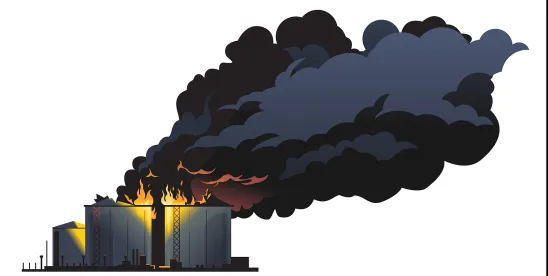In the recent case Sterigenics U.S., LLC v. National Union Fire Insurance Company of Pittsburgh, No. 24-1223 (7th Cir. 2025), the Seventh Circuit court has asked the Illinois Supreme Court to clarify a key issue of state law regarding pollution exclusions in commercial general liability (CGL) insurance policies. The question presented before the court is whether industrial emissions of toxic chemicals authorized by a regulatory permit constitute traditional environmental pollution excluded from coverage or whether the permit alters the analysis. This answer could have significant implications for insurers and insureds facing liability for bodily injuries caused by environmental contamination.
Background
This case involves Sterigenics U.S. and Griffith Foods International, two companies that operated a medical supply sterilization plant in Willowbrook, Illinois, from 1984 to 2019. The plant used ethylene oxide (EtO), an allegedly carcinogenic gas, to sterilize medical equipment and devices. The companies emitted EtO into the air pursuant to a permit issued by the Illinois Environmental Protection Agency (IEPA) in 1984 – a permit that failed to limit the amount of emissions.
In 2018, a federal report suggested that Willowbrook residents were experiencing “staggering and disproportionate” rates of cancer, allegedly due to exposure to EtO. Over 800 people filed lawsuits against Sterigenics and Griffith, claiming that they suffered various illnesses, including cancer, as a result of inhaling EtO emitted by the plant.
Sterigenics and Griffith sought insurance coverage for the lawsuits under their CGL policies issued by National Union Fire Insurance Company. The policies covered bodily injuries caused by an occurrence during the policy period but excluded injuries arising from the discharge of pollutants into the atmosphere, unless the discharge was sudden and accidental.
National Union denied coverage and refused to defend the companies, arguing that the policies’ pollution exclusions applied. In 2021, Sterigenics and Griffith sued National Union in federal court in Chicago, seeking a declaration that the insurer had a duty to defend them against the underlying claims.
The U.S. District Court for the Northern District of Illinois ruled in favor of Sterigenics and Griffith, finding that the pollution exclusion did not apply because the companies emitted EtO pursuant to a permit issued by the IEPA. The court relied on a 2011 Illinois Appellate Court decision, Erie Insurance Exchange v. Imperial Marble Corp., which held that ambiguity existed within that policy’s language as to whether emissions authorized by a regulatory permit constituted traditional environmental pollution and were excluded by a standard pollution exclusion in a CGL policy.
The Decision
National Union appealed to the Seventh Circuit, which decided to certify the question to the Illinois Supreme Court, the definitive authority on Illinois law. The Seventh Circuit noted that the Illinois Supreme Court, in its 1997 decision in American States Insurance Co. v. Koloms, 687 N.E.2d 72 (Ill. 1997), interpreted the pollution exclusion in CGL policies to apply only to injuries caused by traditional environmental pollution, and not routine emissions such as carbon monoxide from a furnace. However, the Court in Koloms did not address the relevance of a permit or regulation authorizing emissions. The Seventh Circuit also observed that its decision in Scottsdale Indemnity Co. v. Village of Crestwood, 673 F.3d 715, 716 (7th Cir. 2012), which held that permitted emissions were not exempt from exclusion, conflicted with the Imperial Marble decision, and that the question was important and likely to recur in future cases.
Implications of the Case
The Illinois Supreme Court's answer to the certified question could have far-reaching consequences for insurance coverage of environmental claims in Illinois and beyond. If the court agrees with the district court and the Imperial Marble decision and finds that a permit or regulation authorizing emissions makes the pollution exclusion inapplicable, then insurers could face increased exposure for bodily injuries caused by industrial emissions that comply with permits but may nonetheless violate environmental standards, which could create liability for the emitter. This also could incentivize insureds to obtain permits or comply with regulations to avoid the pollution exclusion, regardless of the actual environmental impact of their emissions.
On the other hand, if the court agrees with National Union and the Scottsdale decisions and finds that a permit or regulation authorizing emissions does not affect the pollution exclusion, then insurers could avoid coverage for bodily injuries caused by a wide range of industrial emissions allegedly harming third parties, even those permitted by regulatory authorities. For example, this decision will likely significantly impact coverage for PFAS liability.
The pollution exclusion is a common and controversial provision in CGL policies, and courts across the country have reached different and sometimes conflicting results on its meaning and scope. The Illinois Supreme Court’s answer could provide clarity and guidance for future cases involving environmental contamination and insurance coverage nationwide.



 />i
/>i
